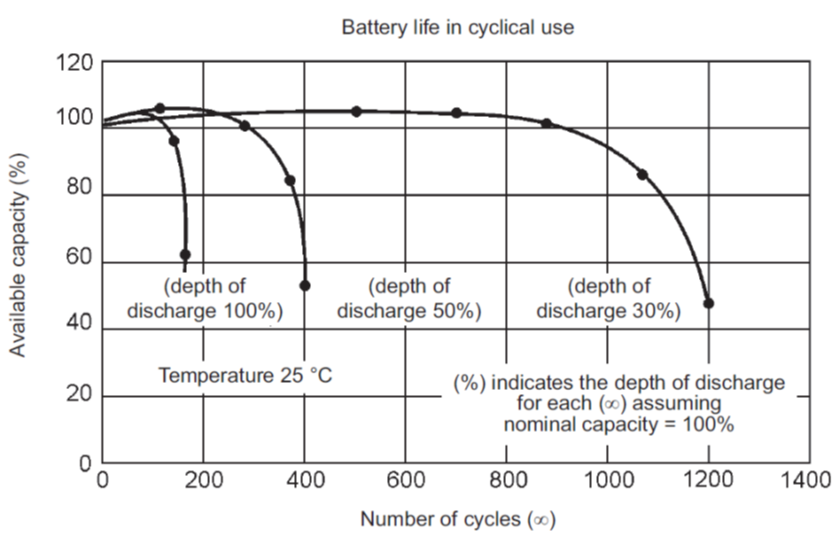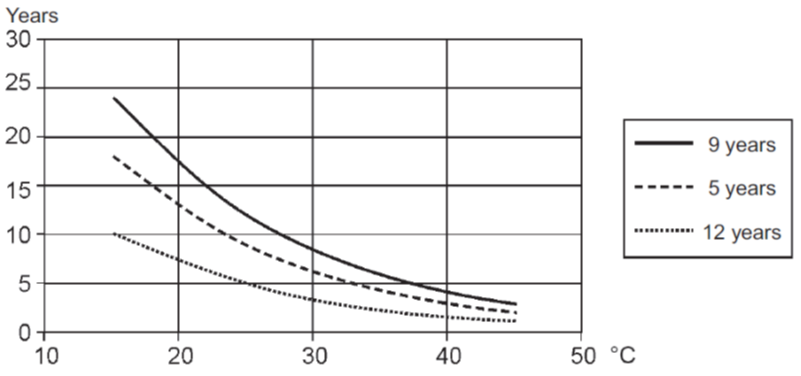The concepts of life and capacity of a battery are strictly linked, in so far as the battery life is the actual time for which the battery maintains its storage capacity and dynamic charge and discharge performance within acceptable tolerances. What applies to one concept is therefore broadly true of both.
Battery life depends essentially on the following parameters:
- temperature of the place of installation;
- use cycles (number, depth of discharge, charging methods).
The performance of sealed lead-acid batteries (Valve Regulated Lead Acid – VRLA), the most common type, is measured according to BS 6290-4 and IEC 60896-21 and 22.
As well as by capacity, battery types are classified by theoretical life-expectancy:
- 3-5 years;
- 6-9 years;
- 10-12 years;
- over 12 years.

It is worth bearing in mind that this life-expectancy refers to laboratory conditions, and is therefore the maximum life theoretically attainable at a reference temperature of 25 °C. In practice, these values are never attainable but serve as an approximation.
The curves in Figure 1 show how the capacity of a battery depends in reality on the number of discharge[1]/charge cycles and on the depth of discharge, whereas Figure 2 shows theoretical life as a function of temperature in the place of installation.

Natural wear of the batteries and the fact that the ambient temperature cannot always be controlled constitute two natural causes of deviation between real and theoretical life.
How to face battery ageing
Many solutions are proposed by the UPS manufacturers to partially compensate premature battery ageing due to ambient temperature but the most effective is based on the following criteria:
- floating charging below 25 °C and pulsating charging over such threshold
- charging voltage temperature dependent (see Table 1).
| Voltage | Maximum Current | Compensation | |
| Recharging | 2.40-2.45 V/element | 0.25 C[2] | -3 mV/element/°C[3] |
Table 1- Typical parameters and corrections for compensating ambient temperatures which differ from the reference temperatures (25 °C)
Tech Info – March 2011
HOW THE TEMPERATURE AFFECTS THE LIFESPAN OF BATTERIES
by
MATTEO GRANZIERO
Technical Communication Specialist
SOCOMEC UPS
[1] The term discharge refers to the process which ends at the minimum end-of-discharge voltage declared by the manufacturer. Discharges to below this value immediately compromise the condition of the battery. Even a battery which has never been used is subject to discharge known as self-discharge. This is caused by inevitable chemical processes within the battery itself, depends on temperature and must be carefully managed in order to keep battery performance up to expectations.
[2] C is the capacity of the battery in Ah
[3] The minus sign of the compensation factor means that as ambient temperature rises, charging voltage falls

